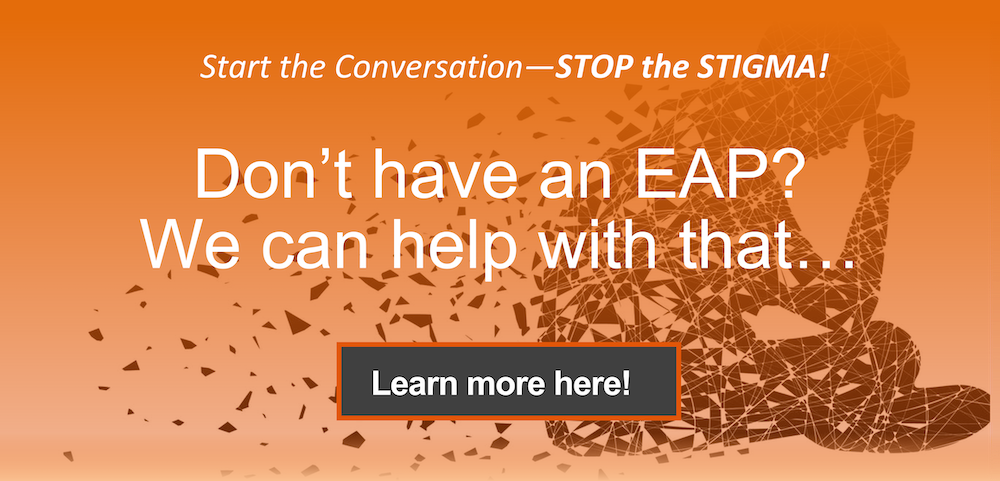Every quarter, HR leaders across organizations face the same uncomfortable question from executives: "What exactly is HR's contribution to our bottom line?" It's a moment that can make even the most experienced professionals pause, searching for concrete evidence of their department's strategic value
This challenge isn't unique to any single organization or industry. As businesses become increasingly data-driven and accountability becomes paramount, HR departments find themselves under pressure to demonstrate measurable impact.
"87% of organizations report that HR metrics directly influence their strategic decisions."- Bamboo HR
The solution lies in the strategic use of key performance indicators (KPIs) that connect people practices to business outcomes. When implemented thoughtfully, HR KPIs transform departments from cost centers into value drivers, providing clear evidence of how human capital strategies contribute to organizational growth, efficiency, and competitive advantage.
Yet many HR teams struggle with where to start, which metrics matter most, and how to translate data into actionable insights that drive real business results.
HR KPIs aren't just numbers on a dashboard. They're the bridge between people strategies and business results, transforming HR from an administrative function into a strategic driver of organizational success.
Beyond Numbers: What Makes HR KPIs Strategic
The distinction between collecting data and creating strategic value often comes down to understanding what separates a key performance indicator from a simple metric. This difference is more than semantic; it determines whether your measurement efforts contribute to organizational success or simply add to the administrative burden.
KPIs vs. metrics: The critical difference
Not every number your HR system can generate deserves the title of KPI. A metric becomes a key performance indicator only when it has a direct, measurable connection to your organization's strategic objectives. While you might track dozens of HR-related data points, your KPIs should represent the vital few that actually influence business outcomes.
Consider the difference between tracking "total training hours completed" versus "improvement in performance ratings following targeted skill development programs." The first is a metric that tells you about activity levels. The second is a KPI that connects your training investment to measurable business results.
The Society for Human Resource Management emphasizes this distinction, noting that effective KPIs serve as role-based indicators that demonstrate how employees are delivering quantifiable results against broader objectives. They must be specific, measurable, and directly tied to outcomes that matter to your organization's success.
The "fewer is better" Principle
One of the most common mistakes organizations make is attempting to track too many KPIs simultaneously. This creates the trap of "collecting data for the sake of it," where teams become overwhelmed by information without gaining actionable insights.
Successful organizations typically focus on three to four primary HR KPIs at any given time. This focused approach allows for:
- Deeper analysis and understanding of each indicator
- Clear accountability for specific outcomes
- More effective resource allocation toward improvement initiatives
- Cleaner communication with leadership about progress and challenges
The goal isn't to measure everything that can be measured, but to measure the things that truly drive your organization forward.
The strategic alignment process
Creating meaningful HR KPIs requires working backward from your organization's primary objectives. This process typically follows a clear hierarchy: business strategy informs HR goals, which in turn determine the specific indicators you'll track.
For example, if your organization's primary objective is sustainable growth, your HR strategy might focus on talent retention and development. This strategic focus then drives specific KPIs such as voluntary turnover rates, internal promotion rates, and skill development completion rates.
This alignment ensures that your measurement efforts support broader organizational success rather than operating in isolation. When HR KPIs connect directly to business outcomes, they become powerful tools for demonstrating value and securing resources for improvement initiatives.
The Essential KPIs That Drive Business Results
While every organization's specific KPIs should reflect their unique strategic priorities, certain indicators consistently prove their value across industries and company sizes. These metrics provide the foundation for understanding how human capital practices impact organizational performance.
4 core metrics
1. turnover and retention rates
Employee turnover serves as one of the most telling indicators of organizational health. However, effective measurement goes beyond simple turnover percentages. The most valuable insights come from tracking voluntary versus involuntary turnover, analyzing patterns by department and tenure, and understanding the specific reasons behind departures.
High-performing employees leaving within their first year often signals problems with recruitment processes or onboarding experiences. Conversely, consistent departures from specific departments may indicate management issues or role misalignment that requires targeted intervention.
2. Time to fill and cost per hire
These recruitment metrics directly impact operational efficiency and budget management. Time to fill measures the length of the entire hiring process, from job posting to acceptance. Extended hiring cycles can indicate process inefficiencies, unrealistic job requirements, or competitive market challenges.
Cost per hire encompasses both internal costs (recruiter time, interview expenses) and external costs (job board fees, agency commissions). Understanding these costs helps organizations optimize their recruitment strategies and justify investments in hiring technology or process improvements.
3. Employee Engagement and Satisfaction Scores
Engagement metrics predict numerous business outcomes, from productivity levels to customer satisfaction ratings. However, measuring engagement effectively requires more than annual surveys. Regular pulse surveys, exit interview insights, and employee Net Promoter Scores provide ongoing visibility into workforce sentiment.
The connection between engagement and business performance is well-documented. Research consistently shows that organizations with highly engaged employees experience lower absenteeism, higher productivity, and improved customer satisfaction ratings.
4. productivity and Performance indicators
Measuring productivity in knowledge work can be challenging, but effective indicators may include revenue per employee, goal achievement rates, and performance review outcomes. These metrics help identify whether human capital investments are generating expected returns.
The key is finding productivity measures that align with your organization's value creation model while avoiding metrics that might encourage counterproductive behaviors or overlook important collaborative contributions.
From Data to Action: Making KPIs Work
Understanding which metrics to track represents only the first step in building an effective HR analytics program. The real value emerges when organizations develop systems that transform data into actionable insights and sustainable improvements.
building your measurement system
Successful KPI implementation begins with establishing reliable data collection processes. This means identifying current data sources, assessing their accuracy, and filling gaps where necessary. Many organizations discover that their existing HR information systems contain valuable data that hasn't been systematically analyzed.
Start by auditing your current data capabilities. What information do you already collect through payroll systems, performance reviews, and employee surveys? Which metrics can be automated, and which require manual tracking? This assessment helps prioritize technology investments and process improvements.
setting baselines and realistic targets
Before you can measure improvement, you need to establish where you currently stand. Baseline measurements provide the foundation for setting realistic targets and tracking progress over time. However, avoid the temptation to set overly ambitious goals that may discourage teams or lead to counterproductive behaviors.
Effective target-setting follows principles of good goal management: specific, measurable, achievable, relevant, and time-bound. A 5% improvement in employee retention over 12 months is more actionable than a vague goal to "improve retention."
technology considerations
Modern HR technology platforms offer sophisticated analytics capabilities, but the key is choosing tools that match your organization's maturity level and specific needs. Real-time dashboards and predictive analytics can provide valuable insights, but they're most effective when users understand how to interpret and act on the information.
Consider starting with basic reporting capabilities and gradually expanding as your team develops analytical skills and confidence in using data for decision-making.
For Leaders: Reading and Acting on HR Data
Business leaders play a crucial role in making HR KPIs effective. When executives demonstrate genuine interest in people metrics and use them for strategic decision-making, it elevates the importance of data-driven HR practices throughout the organization.
key indicators of organizational health
Certain patterns in HR data can serve as early warning systems for broader organizational challenges. Sudden increases in voluntary turnover, declining engagement scores, or extended hiring cycles often signal underlying issues that require leadership attention.
For example, if exit interviews consistently mention lack of career development opportunities, this might indicate a need for enhanced succession planning or professional development programs. When multiple departments show declining engagement scores, it could signal broader cultural issues that require organizational-level intervention.
Supporting data-driven hr initiatives
Leaders can support effective HR analytics by asking good questions about the data, providing resources for improvement initiatives, and celebrating successes when KPIs improve. This creates a positive feedback loop that encourages continued focus on measurement and improvement.
Regular review meetings that include HR metrics alongside financial and operational indicators demonstrate that people data is as important as other business metrics. This integration helps ensure that human capital considerations are part of strategic planning processes.
The Human Element Behind the Numbers
While data provides valuable insights, the most effective HR leaders remember that metrics represent real people with individual needs, motivations, and challenges. This human perspective prevents the mechanical application of solutions that might improve numbers without addressing underlying issues.
Employee assistance programs play a crucial role in this balanced approach. When KPIs indicate stress-related issues, such as increased absenteeism or declining engagement scores, EAPs provide confidential resources that help employees address personal and professional challenges before they impact performance.
The goal isn't to optimize employees for better metrics, but to create work environments where people can thrive while contributing to organizational success. When this balance is achieved, improved KPIs become a natural outcome of genuine organizational health rather than an end in themselves.
Effective measurement systems also recognize that some of the most important aspects of human capital management, such as trust, collaboration, and innovation, can be difficult to quantify directly. While these qualities may not appear on a dashboard, they often drive the metrics that do, making it important to maintain focus on the underlying human dynamics that create sustainable organizational success.
When you partner with Ulliance, our Life Advisor Consultants are always just a phone call away to teach ways to enhance your work/life balance and increase your happiness. The Ulliance Life Advisor Employee Assistance Program can help employees and employers come closer to a state of total well-being.
Investing in the right EAP or Wellness Program to support your employees will help them and help you. Visit https://ulliance.com/ or call 866-648-8326.
The Ulliance Employee Assistance Program can address the
following issues:
• Stress about work or job performance
• Crisis in the workplace
• Conflict resolution at work or in one’s personal life
• Marital or relationship problems
• Child or elder care concerns
• Financial worries
• Mental health problems
• Alcohol/substance abuse
• Grief
• Interpersonal conflicts
• AND MORE!
References:
12 HR Metrics Examples and KPIs You Should Track; ThoughtSpot; Kim Skornik https://www.thoughtspot.com/data-trends/dashboard/hr-metrics-kpis-examples
Benchmarking HR Metrics; Society for Human Resource Management; SHRM https://www.shrm.org/topics-tools/tools/toolkits/benchmarking-hr-metrics
Is Your HR Strategy Making a Difference?; Insperity; Lisa Jasper
https://www.insperity.com/blog/hr-kpis-human-resources-strategy-making-difference/
The 29 Most Important HR Metrics You Need to Track; BambooHR https://www.bamboohr.com/blog/key-hr-metrics



.jpg?width=600&height=338&name=2Google%20Review%20NEW%20w%20click%20here%20button%20(1).jpg)
